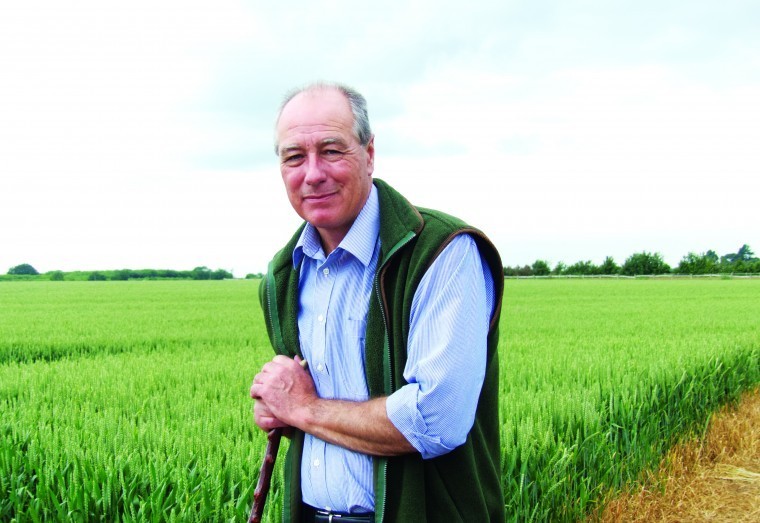Needless to say, September has then produced less than 10mm so far, giving almost exactly an average over the two months but the wrong way round for arable farming. To conclude a harvest result round up, the winter beans yielded 2.1 tonnes an acre and the spring beans two tonnes/acre which for our ground is a very respectable result.
So the summary was good wheat yields almost regardless of variety and rotation place, but overshadowed by the effect of winter flooding and blackgrass with good quality until the very end of the weather effected period.
Oilseed was a little better than average, but again with flooding issues but good weed control below the canopy. Prices we all know about and prospects look depressing. But as the autumn passes Black Sea exports will slow and world planting intentions will change in the face of low prices, so let us hope that we are seeing the bottom of the price trough.
As I mentioned last month, we have planted 1,200 acres of oilseed rape largely by broadcasting behind a Simba Solo with a range of varieties based around 50% hybrid and the rest conventional with some farm saved. The very wet August meant that slugs were the primary pest rather than flea beetle, which did not thrive on the wet days. That said, as we moved into better weather flea beetle became more active and where slugs had thinned the plant stand, the beetle tried hard to finish the job.
The earlier drillings survived and the later drillings look good but in the middle sowings where 55mm of rain fell on 25 and 26 August, we have had to redrill parts of fields. This has been done with a Vaderstaad system disc drill and has left most of the original emergence intact and growing away while thickening the plant stand.
The down side is a spilt emergence with many seedling plants among large three to four leaved plants extending the pest risk period. But at least we have a plant stand over all fields. Without neonicotinoid seed dressing we have certainly used a lot of cypermethrin sprays with variable effect. I do not mind battling with either slugs or flea beetle to achieve oilseed rape establishment but both at the same time with expensive hybrid seed is probably a little too much financial risk. If we are in the same position next year the hybrids will not feature and we will be using a lot more farm saved seed which will be a shame with the amount of effort going into hybrid variety breeding by the seed houses.
Turning to the madness of regulations under the new reformed common agricultueral policy, one of the most pragmatic solutions to the vexed issue of the three crop rule was from a neighbouring farmer who grows a third oilseed rape and two thirds wheat as a rotation. He was carrying on as usual drilling everything relying on the combined onslaught of slugs and flea beetle on the oilseed rape to provide him with at least five per cent failed area to plough up and put into beans, dealing with three crops and the ecological focus area without too much agonising.
Hedge cutting and the extended closed period to the end of August from next harvest is going to cause problems. With the early start to harvest this year and most harvested oilseed rape fields being cultivated before the end of July, we have had to go back and run on cultivated fields in August to carry out hedge cutting – an early experience of what next year will bring. One could list the increased problems in seed bed preparation, compaction and extra headland cultivations to remove wheel marks, the availability of hedge cutting contractors in a smaller time window, the inability to cut any hedges where oilseed rape has been drilled, the poorer quality of hedge cutting where the machines are running on cultivated ground causing more instability in the cutting head, extra journeys across Kent, traffic hold ups etc.
When one looks at the reasons for the change in regulation, DEFRA’s explanation is that they are following European Union regulations. But it is very much DEFRA’s interpretation and the only evidence they offer is a table of nesting times for bird species affected by farming operations. Clearly most species have completed nesting by 1 August and only species on the third brood will still be affected – and then not by much as with annually cut hedges, any growth they are nesting in will not be the annual growth we are cutting. The mortality of late broods is always likely to be higher in any event as winter survival depends on maturity going into winter. The NFU is lobbying hard with DEFRA ministers and all MPs to flag up how ludicrous this regulation change is for farming and how it actually affects our competiveness and efficiency.
While we are talking about birds a brief update on the barn owls at Down Court. The photograph shows one of our fledgling barn owls which has managed to leave the nest but cannot fly. By all accounts on Google, this is a common occurrence leading to mortality in many cases. We duly put the young owl back into the nesting box and subsequently have watched a pair of adults teaching two young owls to hunt in the twilight of evening. It is a fantastic sight.




